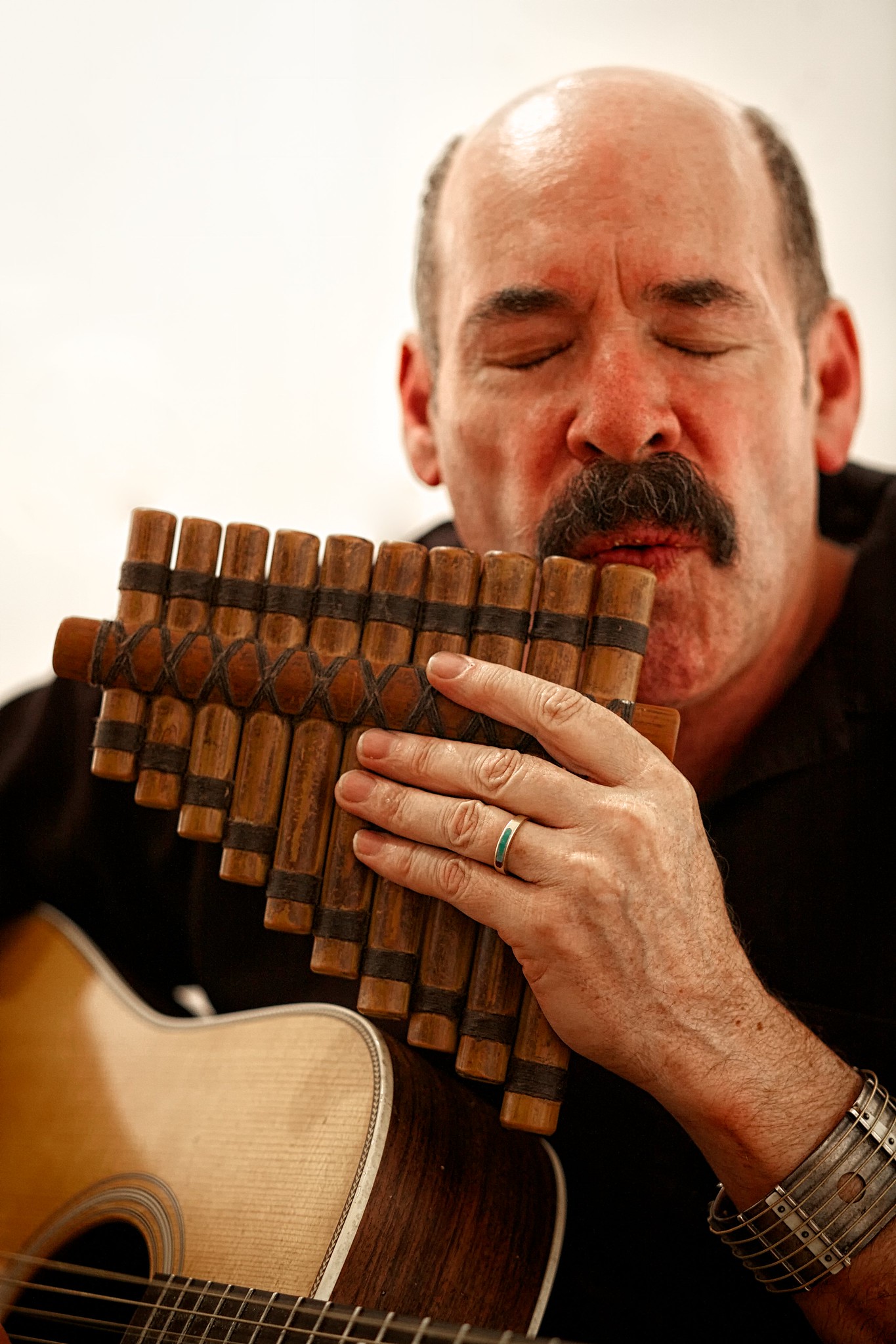The panpipes or “pan flute” derives its name from the Greek god Pan, who is often depicted holding the instrument. Panpipes, however, can be found in many parts of the world, including South America, Oceania, Central Europe, and Asia.
- Panpipes are a collection of end-blown flutes of different pitches without a mouthpiece joined in a bundle or raft. The player blows horizontally across the top of the pipes.
- The earliest known images of panpipes appear in drawings of animal dances from Catal Hüyük in Anatolia dating from the 6th millennium BCE.
- In Europe, the panpipes were first popularized in Italy, particularly among the Etruscans.
- While many panpipes include pipes of varying lengths, in Greece, the panpipe called the syrinx uses pipes of the same length but stopped at different lengths with wax to alter the pitch.
- Romanian panpipes have a concave row of 20 pipes that are stopped with cork and filled with beeswax. The tuning of the instrument is dictated by the quantity of wax.
- In Russia, the panpipes known as kuviklï are considered a woman’s instrument, and are played for dance music or as an accompanying instrument for singers in an ensemble.

Image credit: “Stephen Cohen (3)” by PhotoAtelier. CC BY 2.0 via Flickr. - In the Solomon Islands, panpipes are played in elaborate ensembles by men and boys. Their music is based on natural sounds and events.
- Panpipes were also used in ancient China where they were shaped to resemble the wings of a phoenix. The Chinese panpipes continued to have associations with the phoenix decoratively and musically.
- In the altiplano high plateau of Bolivia and Peru, men typically play panpipes while women dance to panpipe music.
- The Ecuadorian panpipes or “rondador” are shaped in a zigzag style that gradually becomes longer. They are usually made out of cane, but can be made from the thin feathers of a condor or vulture.
Featured image: “Image from page 648 of “Annual report of the Bureau of American Ethnology to the Secretary of the Smithsonian Institution” (1895)” by Photo Internet Archive Book Images. Public Domain via Flickr.



who is the guy in the pic?